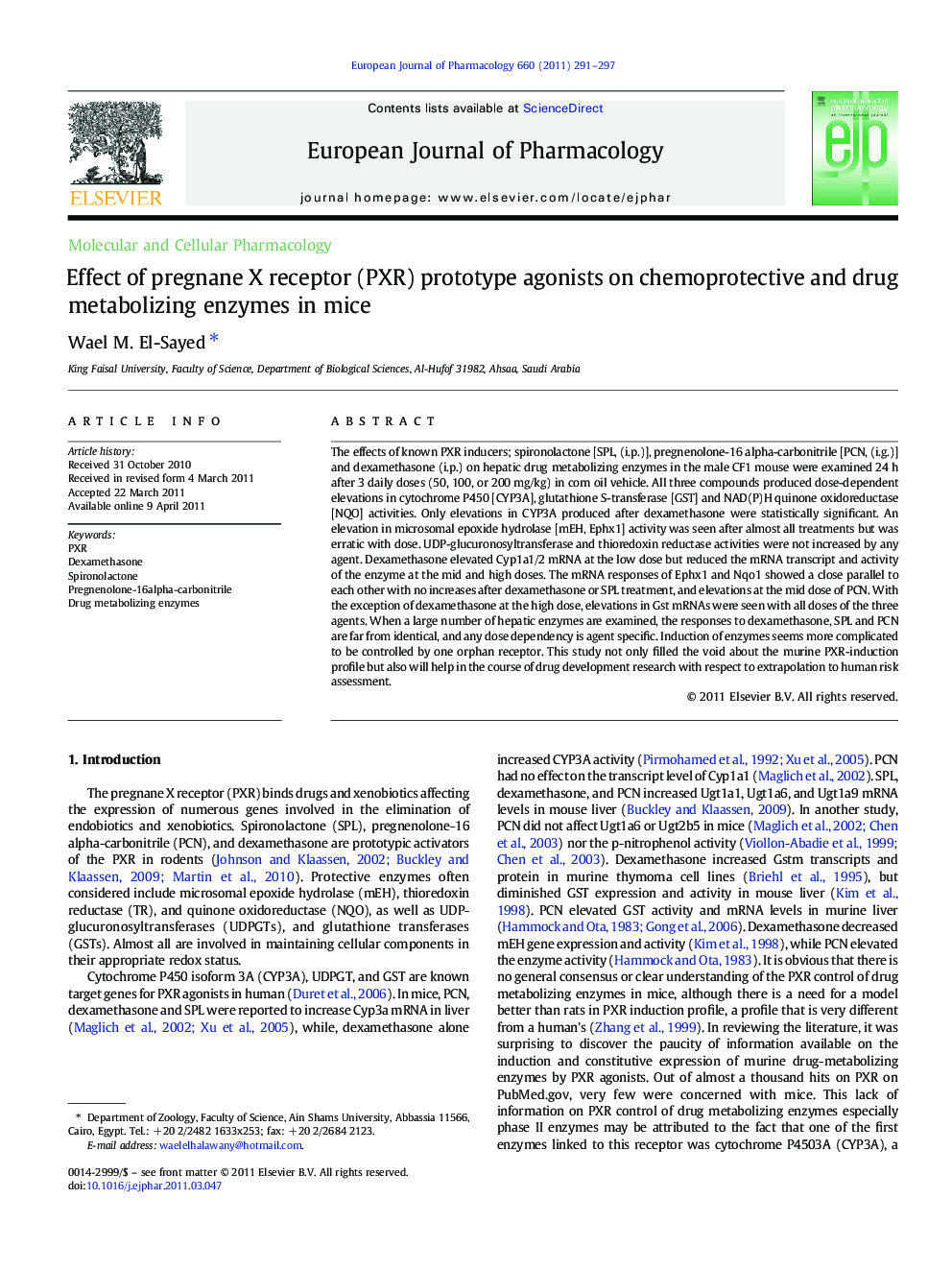| Article ID | Journal | Published Year | Pages | File Type |
|---|---|---|---|---|
| 5830297 | European Journal of Pharmacology | 2011 | 7 Pages |
The effects of known PXR inducers; spironolactone [SPL, (i.p.)], pregnenolone-16 alpha-carbonitrile [PCN, (i.g.)] and dexamethasone (i.p.) on hepatic drug metabolizing enzymes in the male CF1 mouse were examined 24Â h after 3 daily doses (50, 100, or 200Â mg/kg) in corn oil vehicle. All three compounds produced dose-dependent elevations in cytochrome P450 [CYP3A], glutathione S-transferase [GST] and NAD(P)H quinone oxidoreductase [NQO] activities. Only elevations in CYP3A produced after dexamethasone were statistically significant. An elevation in microsomal epoxide hydrolase [mEH, Ephx1] activity was seen after almost all treatments but was erratic with dose. UDP-glucuronosyltransferase and thioredoxin reductase activities were not increased by any agent. Dexamethasone elevated Cyp1a1/2 mRNA at the low dose but reduced the mRNA transcript and activity of the enzyme at the mid and high doses. The mRNA responses of Ephx1 and Nqo1 showed a close parallel to each other with no increases after dexamethasone or SPL treatment, and elevations at the mid dose of PCN. With the exception of dexamethasone at the high dose, elevations in Gst mRNAs were seen with all doses of the three agents. When a large number of hepatic enzymes are examined, the responses to dexamethasone, SPL and PCN are far from identical, and any dose dependency is agent specific. Induction of enzymes seems more complicated to be controlled by one orphan receptor. This study not only filled the void about the murine PXR-induction profile but also will help in the course of drug development research with respect to extrapolation to human risk assessment.
